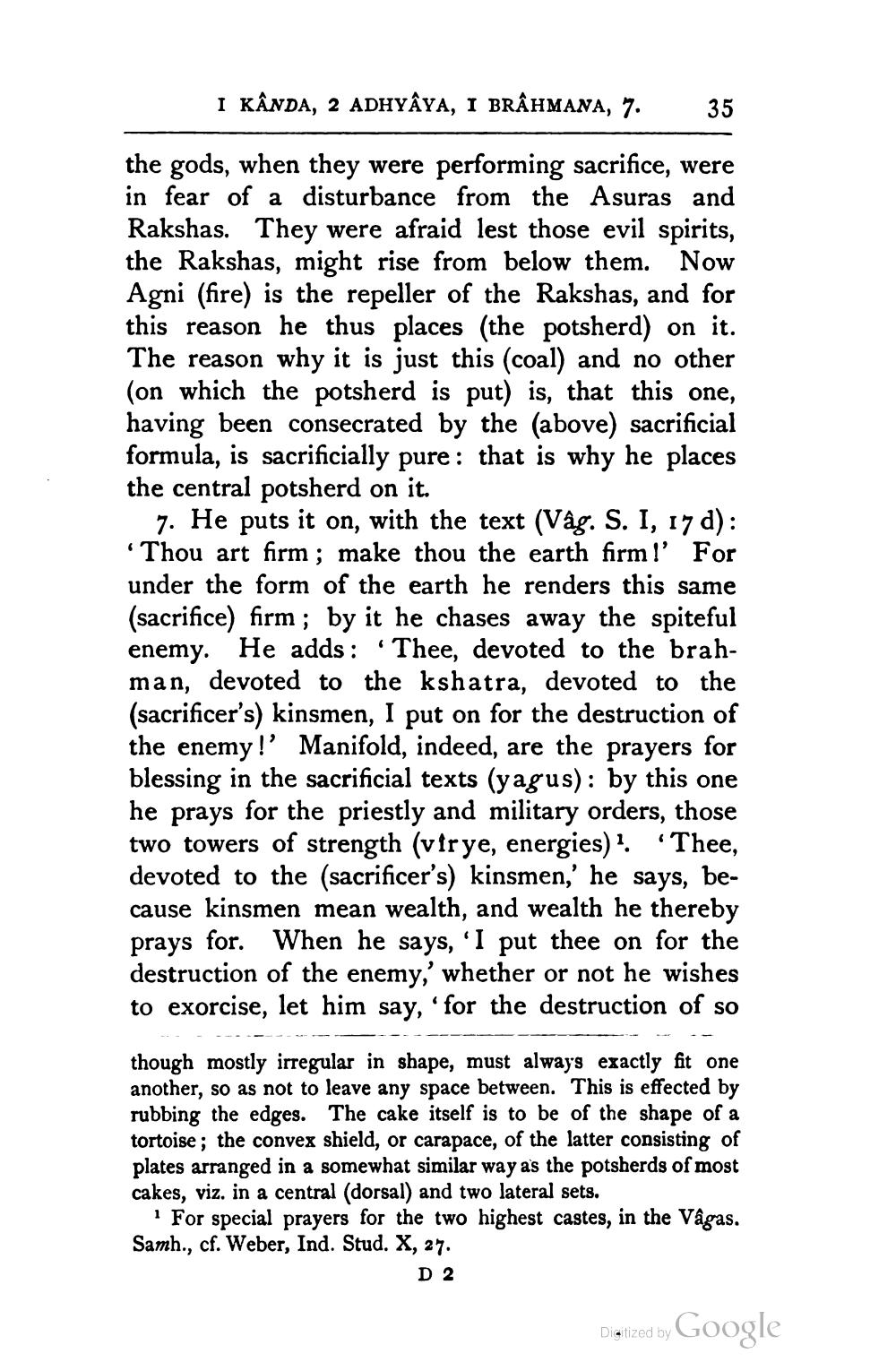________________
I KANDA, 2 ADHYAYA, I BRAHMANA, 7. 35
the gods, when they were performing sacrifice, were in fear of a disturbance from the Asuras and Rakshas. They were afraid lest those evil spirits, the Rakshas, might rise from below them. Now Agni (fire) is the repeller of the Rakshas, and for this reason he thus places (the potsherd) on it. The reason why it is just this (coal) and no other (on which the potsherd is put) is, that this one, having been consecrated by the (above) sacrificial formula, is sacrificially pure: that is why he places the central potsherd on it.
"
7. He puts it on, with the text (Vâg. S. I, 17 d): 'Thou art firm; make thou the earth firm!' For under the form of the earth he renders this same (sacrifice) firm; by it he chases away the spiteful enemy. He adds: Thee, devoted to the brahman, devoted to the kshatra, devoted to the (sacrificer's) kinsmen, I put on for the destruction of the enemy!' Manifold, indeed, are the prayers for blessing in the sacrificial texts (yagus): by this one he prays for the priestly and military orders, those two towers of strength (virye, energies). 'Thee, devoted to the (sacrificer's) kinsmen,' he says, because kinsmen mean wealth, and wealth he thereby prays for. When he says, 'I put thee on for the destruction of the enemy,' whether or not he wishes to exorcise, let him say, 'for the destruction of so
though mostly irregular in shape, must always exactly fit one another, so as not to leave any space between. This is effected by rubbing the edges. The cake itself is to be of the shape of a tortoise; the convex shield, or carapace, of the latter consisting of plates arranged in a somewhat similar way as the potsherds of most cakes, viz. in a central (dorsal) and two lateral sets.
1 For special prayers for the two highest castes, in the Vâgas. Samh., cf. Weber, Ind. Stud. X, 27.
D 2
Digitized by
Google




